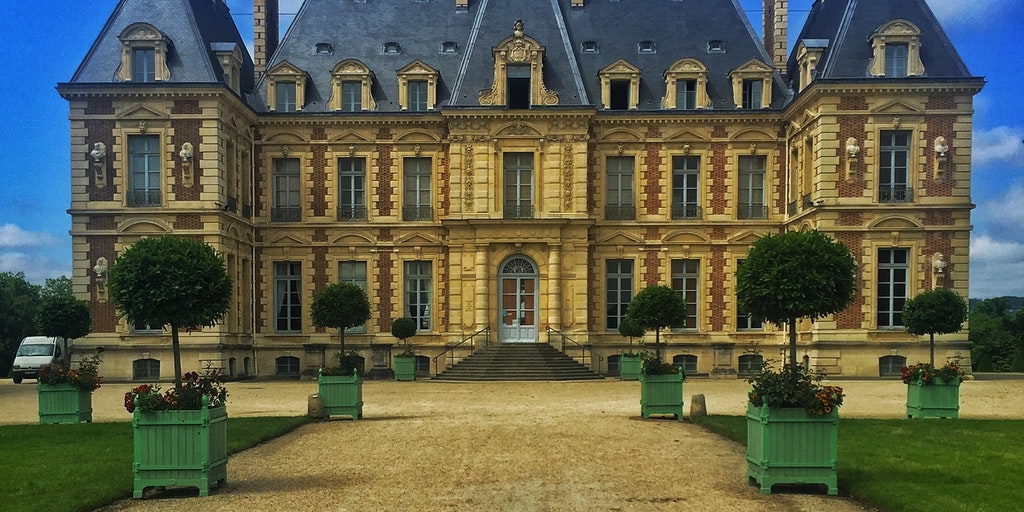The House of God

In considering the house of God, it is helpful if we distinguish the various aspects in which the Church of God, the Assembly, those who are the called-out ones, is seen in Scripture. The usual term of assembly or church is really an umbrella expression, if we can so speak. The persons who are the Lord’s own, those redeemed by His precious blood, are seen collectively in at least four types:
- The Body of Christ,
- The Wife of Christ,
- The Bride of Christ, and
- The House of God
The Body of Christ represents the believers as those that have a heavenly character. The Body was formed in Acts 2, consequent upon the ascension and glorification of our Lord Jesus Christ, when the presence of the Holy Spirit on earth was dwelling in the disciples gathered together. Thus the Body, composed of every believer and vitally linked to its Head in heaven, is maintained, directed, and controlled. It is generally associated with the place of privilege into which we have been brought by the work of God through new birth and the redemption which is in Christ Jesus our Lord.
The Wife of Christ aspect sees us as His helpmeet, formed out of the Man, bone of his bone; she has her place with our Lord, in view of the world to come and the place of administration into which His work has brought her. Having been given a new nature (at new birth) and a new body (at the Rapture) the wife is introduced in Revelation 19 as having made herself ready: “to present you a chaste virgin to Christ” (2 Corinthians 11).
The Bride of Christ has to do with the affections and public display. She is not mentioned directly until Revelation 21; her place is with Christ eternally during God’s Day of Rest. She is seen as coming down from God as adorned for Her husband. All the work of adornment is of God’s providing, the work of His sovereign grace in providing a bride for His blessed Son, in contrast with the Wife making herself ready for the Millennium.
The House of God is the dwelling place of God on earth today through the Spirit’s presence in the believers. It mainly speaks of our responsibility as living here in this world to represent God and to be the place from which His grace and blessing issues forth toward man, the result being praise to God for all His goodness.
IN THE OLD TESTAMENT
Read Genesis 28:10–22, 31:13, and 35:1–7
The first mention of the House of God in the scriptures is in relation to Jacob and Bethel (Bethel means house of God). As a young man, I was taught that it is often helpful to study the first mention of a subject to understand the key principles associated with it. This is a piece of advice that has proven true. In Genesis 28 we find Jacob brought face to face with God, and there are five main principles for us to note:
- The Lord’s presence is seen and recognized (28:16)
- “How dreadful [awesome] is this place”—Holiness and reverence in response (28:17)
- A direct link to heaven—a ladder on earth with its top in heaven (28:12)
- God’s grace and faithfulness are evident (28:14–15)
- God’s testimony is displayed (28:18)
Firstly, there is in the House of God a realization that “the Lord is in this place.” His presence and activity are unmistakable. At this stage in his life Jacob did not know God (27:20; 28:21), and although Jacob was running away from his brother, had acted falsely and lied, yet when he is brought into the house of God, he realized the presence of God.
Secondly, when brought before God, there is an immediate sense of His holiness and the awe which His presence brings.
Thirdly, the House of God has a direct connection to heaven with access to it. The ladder was the means by which angels ascended and descended from earth to heaven, and the Lord stood above it.
Fourthly, the grace of God—“the land…to thee I will give it and thy seed. And thy seed shall be as the dust of the earth” (28:13–14)—is seen in all its plenitude and vastness—the blessing of all the families of the earth. The faithfulness of God is also apparent: “I am with thee and will keep thee and…I will not leave thee!” What faithfulness to one who was a fugitive, who had nothing and deserved nothing, except punishment.
Finally, God’s testimony is brought to light: Jacob erects a pillar, always a type of public testimony, and pours oil onto it (a picture of the Holy Spirit) and names the place Bethel, the House of God.
In response to God’s promise, Jacob finds himself making a vow, rather than simply accepting God at His word: “IF GOD will be with me…keep me…give me bread…garment[s] to put on and I come again to my father’s house, then shall the Lord be my God and…I will surely give the tenth unto thee.”
During the next twenty years we see Jacob striving day and night without looking to God at all; then God spoke to him, telling him to return to the land of his father and reminding him that He was the God of Bethel, “where thou anointedst the pillar, where thou vowedst the vow.” We find that the work of God in teaching Jacob begins to bear results: he immediately left, with all he had acquired. Still, he had tests before getting to Bethel—first with Laban and then with Esau. Despite the angels of God meeting him and his recognition of the Camp of God, he sought to ingratiate himself with his brother to avoid facing him. The result: Jacob builds himself a house and gets stuck at Succoth with all its attendant problems, although he does build an altar to the God of Israel. But then, God speaks again to Jacob: “Go to Bethel and build an altar unto the God that appeared to thee there.” After experiencing the discipline of God, he acts and, recognizing God’s holiness, he brings his family to order and requires that the strange gods be removed and that they cleanse themselves. This occurs at Shechem, the place of decision, where Joshua would later say: “Choose ye this day whom ye will serve.” This is the place of separation—another feature of the house of God—and now Jacob will acknowledge the God of the House of God: he builds an altar, the place of worship and praise to God. And in the place where he owns God, the Lord confirms his promise to bless. Jacob sets up another pillar and pours oil and a drink offering upon it:—praise to God, and in the drink offering, joy in God—that which gladdens the heart of God and man—thus completing the features of the house of God.
Read Exodus 15:2,13; 25:1–10; 29:43–46; 40:34–35; Numbers 5:1–3
We move now from the outline and shadow to the tabernacle in the wilderness, the habitation of God: designed by God and built by man. The children of Israel had been in bondage after there arose a Pharaoh who knew not Joseph. Moses was raised up of God to deliver His people from the yoke of Pharaoh. After Pharaoh refused to let the people go, God demonstrated His power through the ten plagues that came upon Egypt. The Passover was the instrument used by God to accomplish His mighty work of redemption. The Passover consisted of three principal features:
- Protection—blood applied to the houses with hyssop,
- Food—Lamb roasted by fire and unleavened bread, and
- Exodus from Egypt—deliverance by power at the Red Sea and destruction of the enemy
In the Passover, God, by His grace, secured a people for Himself on the basis of redemption. The Lamb was slain, and the blood applied to the houses for shelter; the Lamb having been roasted with fire was food for the people and, together with unleavened bread, provided sustenance for their journey. At the Red Sea the people stood still to see the mighty victory which God accomplished, and Pharaoh and his host perished in the water. The people were freed from the yoke of the oppressor and then, for the first time, we find singing. They sing, “The Lord is…my salvation…and I will prepare Him a habitation” (Exodus 15:2). In New Testament language: “We joy in God, through our Lord Jesus Christ” (Romans 5:11). “Thou in thy mercy led forth the people which thou hast redeemed, thou hast guided them in thy strength unto thy holy habitation” (Exodus 15:13).
The detail of the construction of the tabernacle and its accompanying furniture, vessels, and priesthood, was communicated by God to Moses on the mountain (Exodus 25 and following). The ground upon which God took up His abode in the midst of the people is made clear in Exodus 29. Directions are given first concerning the construction of the sacred vessels and the furniture, which set out the display of God; second, for the consecration of the priests; third, the detail of the continual burnt offering; and finally, for the vessels necessary to approach God. The essential feature for man’s approach to God must be on the basis of having the perfections of the person and work of our Lord Jesus Christ constantly before the eye and heart.
Necessarily following this is the separation of the tabernacle and the priests to God—our sanctification. Now all is prepared for God to dwell amongst His people: “Then a cloud covered the tent of the congregation, and the glory of the LORD filled the tabernacle. And Moses was not able to enter into the tent of the congregation, because the cloud abode thereon, and the glory of the LORD filled the tabernacle” (Exodus 40:34–35).
In summary, the dwelling place of God in the midst of His people is based upon:
- The fragrance of Christ as burnt offering,
- The One who is dwelling in the midst of His people is the God of redemption, and
- The separation of the whole system to God on the basis that His claims have been met.
It is well to recall that obedience to God is a fundamental requirement in the building of the House of God—note at least 14 times in chapters 39 and 40 the statement: “as Jehovah had commanded Moses.” Furthermore, holiness and separation from evil is essential (read Numbers 5:1–3).
God was in the midst of His people on earth, and all could approach in the appointed way and with their sacrifices. The only people on earth where God was dwelling—truly a great privilege, but with a concomitant responsibility.
Read 2 Chronicles 3:1–4; 6:1–11; 7:1–2; Deuteronomy 16:11
The next aspect of the House of God is seen in the Temple built by Solomon.
The children of Israel had come through the wilderness and entered into the land of God’s providing. The tabernacle had been set up at Shiloh and was known as the Tabernacle of the Congregation (1 Samuel 2:22), but also as the “Temple of the Lord” (1 Samuel 3:3)—a picture of the house that would later be built in Jerusalem and would be “exceeding magnificence" (1 Chronicles 22:5). Perhaps the preeminent thought in relation to the Temple is the display of the glory of the One whose temple it is. The construction and detail of the building, just as in the case of the tabernacle, are designed by God, but here communicated to David who gave the complete instructions to Solomon. Solomon built the temple, and the details provide beautiful types for us: the stones prepared before being built into the structure; the abundance of gold, silver, and precious stones; and the varieties of timber. All the work is completed, the Ark of the Lord in its place, and, after Solomon has dedicated and prayed, fire comes down from heaven and consumes the offerings and the glory of the Lord fills the temple.
Again, as He did in the wilderness, the Lord took up His abode in His Temple in the midst of His people whom He had chosen. This was the one place on earth to which the true Israelite turned with thoughts of worship and praise (Deuteronomy 16:11).
It has often been remarked that there are seven kinds of gold used in the temple to illustrate the distinctive divine glories that are seen now in the saints of God by the angels (the all various wisdom of God, Ephesians 3:10) and will be seen in the kingdom. There are also four varieties of wood used in the construction, which in type may reflect our resurrection bodies as seen in the Holy City, which in the Millennial reign will be the dwelling place of God.
Read Ezra 1:1–2; 3:8; 6:14–22
Next, we consider the House of God following the return from the Captivity of Babylon. Following the failure of Israel to stand for God after being led into idolatry and false religious practice, the hand of the Lord finally came in judgement upon the people. Nebuchadnezzar was the instrument employed to discipline the children of Israel. Jerusalem was sacked, the temple destroyed, and the people taken into captivity. But God (who is rich in mercy) had already, through the prophets, promised that the people would be returned to the land so that they could once more have a temple for the Lord. This building was put into the hands of men, and although delay and weakness were evident, yet the Lord, by his servants Haggai and Zechariah, encouraged the people to rebuild. When completed, the children of Israel offered sacrifices and sin offerings and kept the Passover with the feast of unleavened bread, because they had purified and separated themselves and “kept the dedication of this house of God with joy” (Ezra 6:16).
Here there are no outward signs of God’s presence. This is in contrast to both the inauguration of the tabernacle and Solomon’s temple when fire came down from heaven to consume the sacrifices and the cloud of glory was displayed. Just as the remnant in that day accepted that God was dwelling in His holy temple and that He had accepted their sacrifices, we also accept by faith that God has accepted the work of our Lord Jesus to make us His people and that He dwells in the midst of His people (Matthew 18:20). That this was God’s house was confirmed by the Lord through the prophet Haggai: “The latter glory of this house shall be greater than the former” (2:9) and by the Lord speaking when here in this world of “my Father’s house” (John 2:16), and His final rejection of it as God’s house: “Behold your house is left onto you desolate” (Matthew 28:38).
IN THE NEW TESTAMENT
As we follow the House of God, we find that the Lord Jesus referred to a new dwelling for God while here in this world: “Destroy this temple and in three days I will rebuild it…but he spake of the temple of his body” (John 2:19–21). Again, in speaking to Peter the Lord said, “I will build my church” (Matthew 16:18).
Read Acts 2:1–4,11,37–47; 1 Corinthians 6:19; Ephesians 2:22; 1 Peter 2:5
Now, in the day of grace, God began to dwell on earth in an entirely new way as set out in Acts 2. God, in the person of the Holy Spirit, came down “as a rushing mighty wind and filled the house where they were sitting and…cloven tongues like as of fire, and it sat upon each of them. And they were all filled with the Holy Ghost” (Acts 2:2–4).
The believers are viewed collectively as “the building fitly framed together growing unto a holy temple in the Lord: in whom ye also are builded together for an habitation of God through the Spirit” (Ephesians 2:21,22) and, at the same time, individually each believer is told, “your body is the temple of the Holy Spirit which is in you” (1 Corinthians 6:19). This house of God that begins in Acts 2 continues today and will culminate at the rapture, when the whole redeemed company will be caught up to be forever with the Lord.
We can observe in Acts 2 the same principles that characterized the House of God in its first reference in Genesis are seen now with the House of God in Christianity.
- The Lord’s presence seen and recognized (v. 11)
- A direct link to heaven (v. 2,33–36)
- Holiness and reverence in response (v. 37,38)
- God’s grace and faithfulness are evident (v. 39)
- God’s testimony displayed (v. 46–47)
In the first place, the presence of the Holy Spirit is readily recognized by the crowd: “the wonderful works of God.” Second, the Holy Spirit is on earth and the Lord Jesus Christ is seated at the right hand of God. Next they were pricked to the heart, repented, and were baptized, separating themselves from the world which had crucified Jesus of Nazareth, who is raised up and exalted by God and made Lord and Christ. God’s grace is seen: “Repent and be baptized every one of you in the name of Jesus Christ for the remission of sins, and ye shall receive the gift of the Holy Ghost. For the promise is to you, and to your children, and to all that are afar off.” His faithfulness is evident as the believers “continued steadfastly in the apostle’s doctrine and fellowship, breaking of bread and prayers, and the Lord added to the church daily such as should be saved.” Finally, there is a public testimony to God as they continued “daily with one accord…breaking bread from house to house…praising God.”
As the preaching of the gospel progressed and the truth spread, the Lord raised up those to preach and teach, and in Acts we see the gospel spreading from Jerusalem to Samaria and then to the Gentile nations. As this work proceeds, we find that the responsibility of the maintenance of the truth in the hands of men is characterized by failure. The epistles of Paul, in particular, show how this failure is evident. In writing to the Corinthians, the apostle has to admonish them for being carnal, forming divisions, and allowing disorder amongst the saints. He uses this occasion to set before us the truth of the church in testimony here in this world.
Read 1 Corinthians 3:3–18
In this section, we have the saints seen as builders and encouraged by the apostle to be wise builders. He describes the builders as fellow-workmen and God’s workmen; the saints are the result of God’s husbandry, they are God’s building as a result of the wise working of Paul, who laid the foundation of the building in Corinth. But Paul cautions them, “let every man heed how he builds.” This admonition gives the two sides of building: The Lord Jesus said to Peter, “Upon this Rock [Himself] I will build my church,” whilst Paul can say, “I laid the foundation” and “let every man heed how he builds.” On the one hand everything that the Lord Jesus builds is absolutely perfect, it can be nothing else; however, what man builds may be defective.
“Now if any man build upon this foundation gold, silver, precious stones, wood, hay, stubble; every man’s work shall be made manifest: for the day shall declare it, because it shall be revealed by fire; and the fire shall try every man’s work of what sort it is. If any man’s work abide which he hath built thereupon, he shall receive a reward. If any man’s work shall be burned, he shall suffer loss: but he himself shall be saved; yet so as by fire. Know ye not that ye are the temple of God, and that the Spirit of God dwelleth in you? If any man defile the temple of God, him shall God destroy; for the temple of God is holy, which temple ye are” (vv. 12–17).
The apostle sets before us three classes of builders:
- Good builder, whose work is good and who receives a reward.
- Good workman, who is saved, but his work is bad and is burned up, and he suffers loss.
- Bad workman, who builds bad material, and both work and worker are destroyed.
The verses make noticeably clear the different types of work: on the one hand, gold, silver, and precious stones, and on the other wood, hay, and stubble. There are those brought into the assembly who are truly saved but others who are not born again, who are without divine life. Such dead persons may be brought in unwittingly, the introducer being deceived. They may be introduced because of erroneous teaching, and the person has only an appearance of life. In the ruin and breakdown of Christendom in the present day, there are those who claim to be preaching the gospel, but alas, it is a false gospel. They may have many followers and an outwardly successful building, but sadly the day will reveal the truth. Just as with the tares and the wheat in Matthew 13, the Lord allows things to continue until the end, every professor in the Lord Jesus is taken on their profession (“the Lord knoweth them that are His”). That is why there are many “ifs” in the apostle’s writings—“if ye continue”—not that continuance will result in the blessing, but rather that it will display the truth of reality, whether in time or at the Judgement Seat. In 1 Timothy we have the setting forth of the order of the House of God and our behavior in the house.
Two final comments before moving to our next subject: First a word of caution to carefully examine Scripture to be clear about the House of God and in which aspect it is being viewed. Is it the House of God in all its perfection as that under construction by the Lord Himself, or is it the building of man? Second, a word of guidance: Carefully note 2 Timothy 2 and observe the instruction given by the Apostle to his beloved child in the faith, and by extension to us today, that in a great house there are many vessels—and how we are to walk given the many companies of professing Christians and the mass of error in that profession. We are to purify ourselves, separating ourselves from what is dishonoring and to our Master.
A temple to the Father’s praise,
Composed of all the saints who own
No Savior but the “Living Stone”
Read Revelation 21:9–10,22–33
The House of God continues to grow until the rapture of the saints and is seen in this world as the holy city, Jerusalem, during the world to come as all-glorious. “The Lord God Almighty is its temple, and the Lamb.” Here, the thought of the city and the temple have coalesced and, as in the Old Testament God occupied the land in His people, just so the saints of God are the vessel used of God as the city and temple. All of the features of the House of God are seen again in this city/temple: the presence of the Lord (v. 23), holiness (v. 27), a link with heaven (v. 10), God’s grace and faithfulness (22:2), and God’s testimony (22:4–5).
In the thought of the city we have God’s rule in relation to the world to come, whereas in the house it is God’s dwelling, and in relation to the land or nation God’s blessing. In the world to come all of these features come together, and the universe is a scene of perfect bliss.
The light and temple be,
And radiant hosts for ever share
The unveiled mystery.
Read Revelation 21:1–9
In its final state the tabernacle of God is seen in the relation to the new earth and dwelling amongst men. “The holy city, new Jerusalem, coming down out of the heaven from God, prepared as a bride adorned for her husband” (Revelation 21:2).
In this beautiful description we have the redeemed people of God, not now as a wife, a helpmeet for the man to administer with Him the millennial kingdom, but as a bride, adorned in all the glories of God, the fruit of the sovereign work of God, for the affections of her husband. This is the character which she will have eternally and is the vessel through which God will tabernacle amongst men during His day of rest. God has desired to dwell amongst men from the beginning, in Genesis coming to man in the cool of the day; He has now fulfilled His desire, and His work is ended in relation to men, His purpose to have a bride for His Son brought to fruition, and men brought by His sovereign love and grace into a place of blessing.
Where all around is bliss.
Where all in Thee supremely blest,
Thy praise their service is.
Eternal love their portion is,
Where love has found its rest,
And filled with Thee, the constant mind
Eternally is blest.





